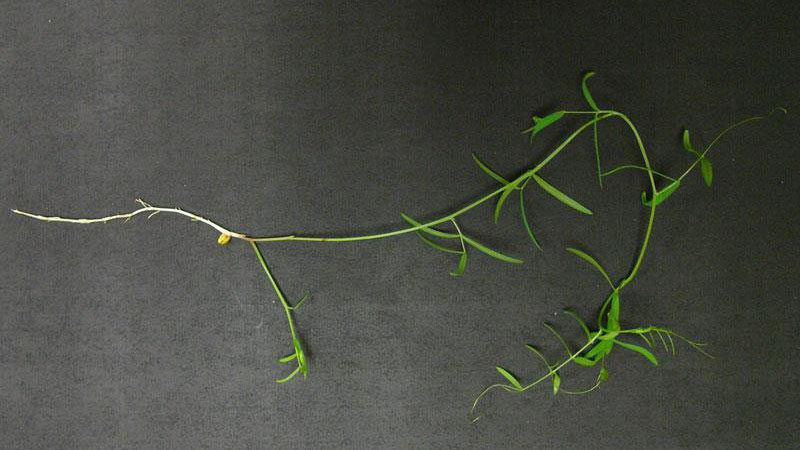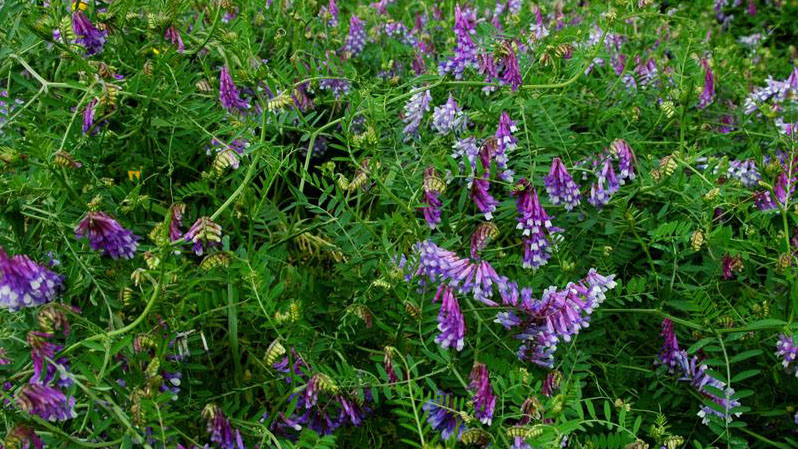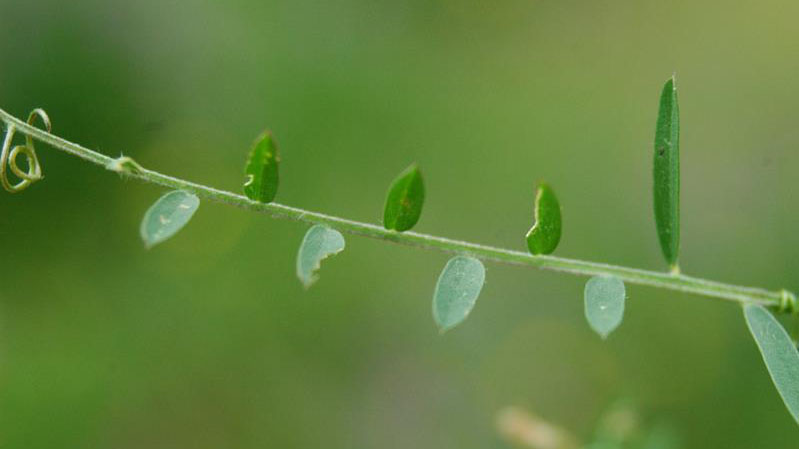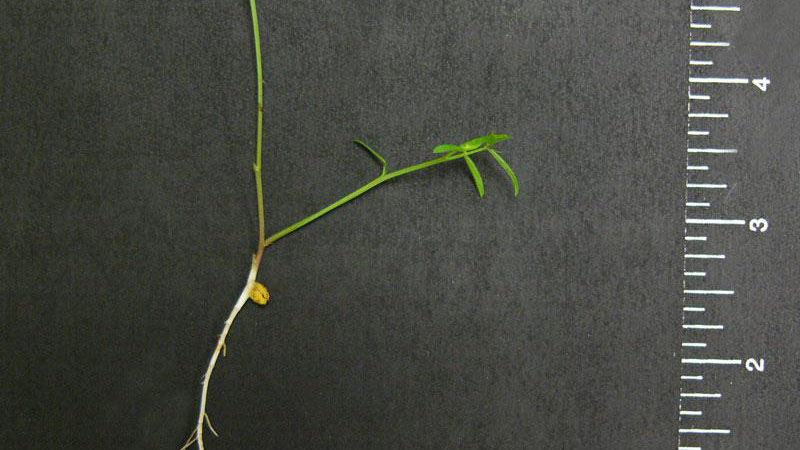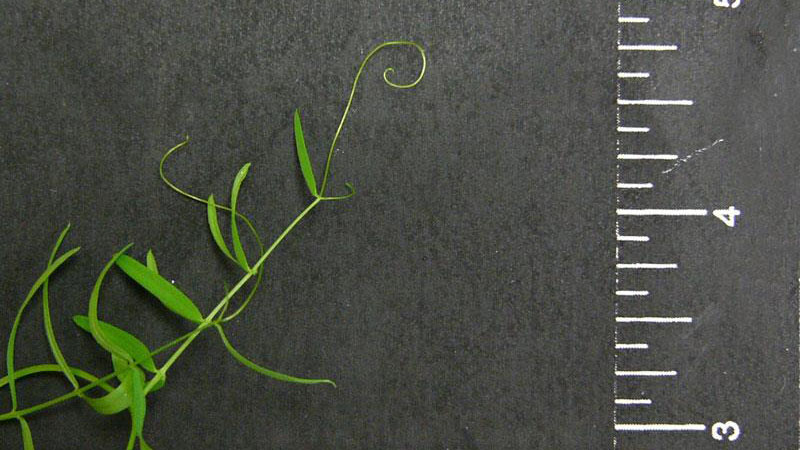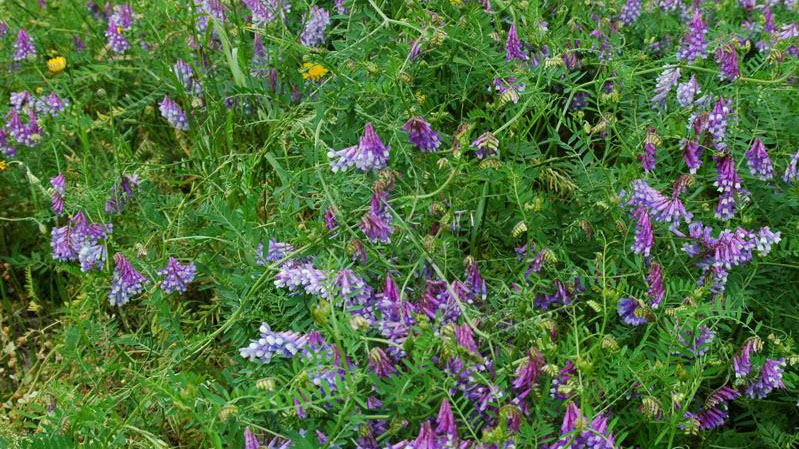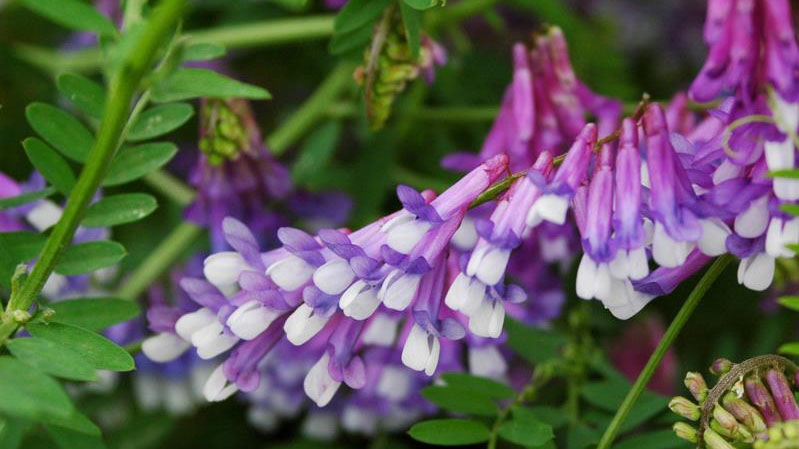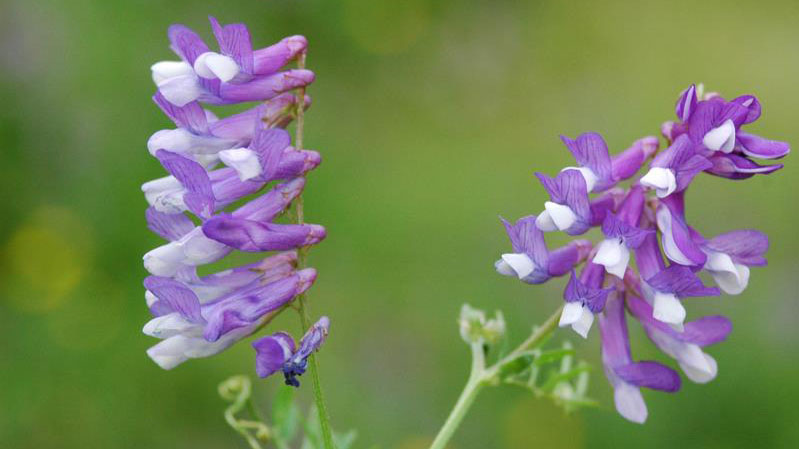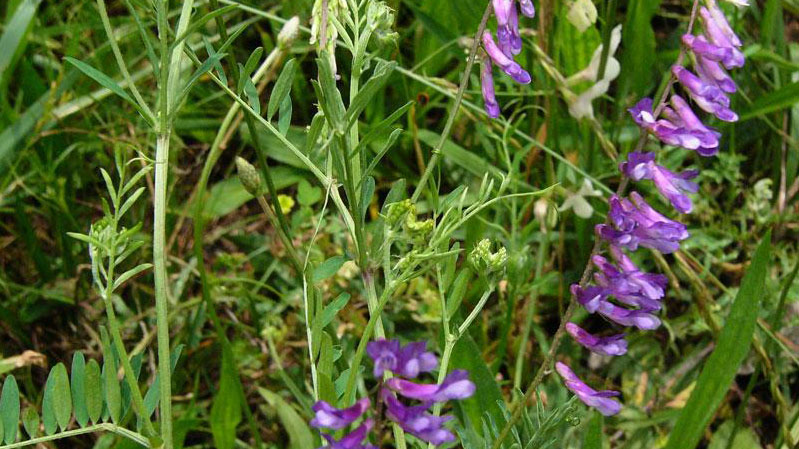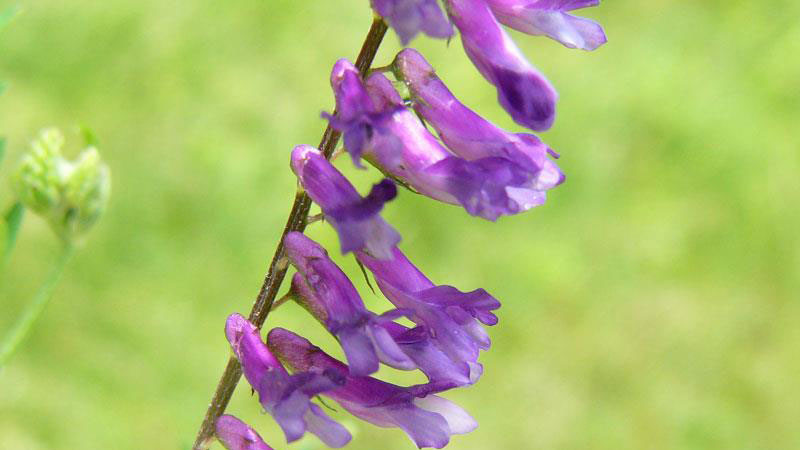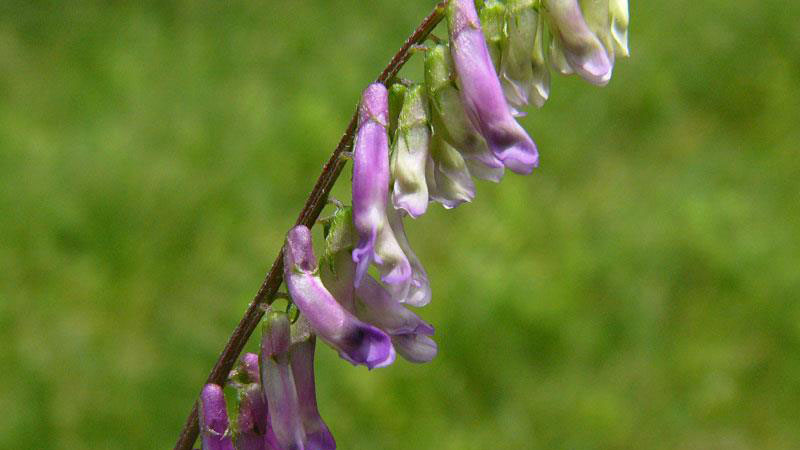Description
Hairy vetch (Vicia villosa) is a trailing winter annual, biennial, or summer annual weed that forms large mats of vegetation. The leaves of hairy vetch are oblong, with 5-10 pairs of leaves per leaflet. Tendrils form on the ends of the leaves. Purple flowers form in early to mid summer.
Cultural Control
Hairy vetch is a winter annual, biennial, or summer annual weed that forms large mats of vegetation. Maintain a dense, actively growing turf through proper mowing, fertilizing, and watering practices. Mow at the proper height for your selected adapted turfgrass. Coring and traffic control reduce compaction and encourage desirable turfgrass competition.
Species Data
- GROWTH SEASON / LIFE CYCLE
- summer annual or winter annual or biennial weed
- GROWTH HABIT
- LEAFLET NUMBER
- 5 - 10 pairs per leaf
- LEAF MARGIN
- smooth
- LEAF HAIRS
- upper / lower surface
- LEAF / LEAFLET SHAPE
- LEAF WIDTH
- 1⁄2 - 1 inch
- LEAF VENATION
- pinnate
- LEAF ARRANGEMENT
- alternate
- ROOT TYPE
- taproot
- FLOWER COLOR
Publication date: Nov. 27, 2017
N.C. Cooperative Extension prohibits discrimination and harassment regardless of age, color, disability, family and marital status, gender identity, national origin, political beliefs, race, religion, sex (including pregnancy), sexual orientation and veteran status.

